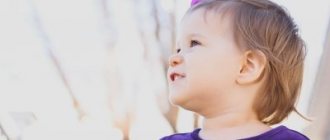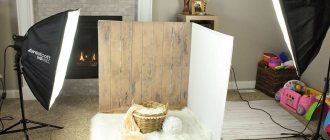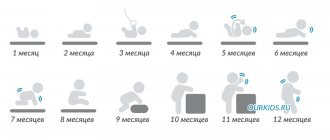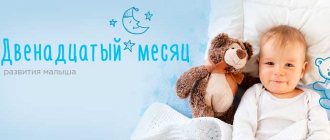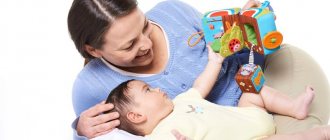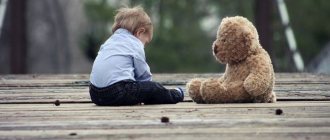By the age of 1 year and 7 months, the child can already do almost everything: his movements are fully coordinated, the baby is extremely active and inquisitive.
Kids of this age love active games, try to overcome various obstacles and explore new places, so parents must be extremely attentive.
What can a baby do?
At the age of 1 year and 7 months the child:
- already walks quite confidently;
- knows how to jump in place, forward;
- squat;
- no longer falls or stumbles, because he has learned to look at his feet;
- easily avoids various obstacles;
- able to climb stairs independently, but can only go down with support;
- easily gets out of the crib or playpen;
- opens and closes doors in the room;
- actively plays with the ball, kicks and throws it;
- puts together light mosaics, construction sets, cubes with interest, studies surrounding objects;
- deftly handles small objects, can open a tap or bottle cap.
Important! Parents should be careful not to leave dangerous objects and medications within reach, and insulate sockets and wires.
The baby can already distinguish objects by shape, color and size ; logical thinking develops, the ability to compare an action with a consequence.
For example, he understands that if he drops a cup, water will flow out of it.
At this age, the child begins to actively imitate adults - he tries to comb his hair, dress and undress himself, and help with various household chores.
In addition, the baby is already able to recognize himself in the mirror and admire his reflection, show parts of the body; he knows his name, tries to pronounce it, knows the names of family members.
Intellectual development
At the age of 19 months, object-manipulative activity gradually begins to transform into play. And although the full game is still quite far away, this is a great achievement.
At this age stage, the child has perfectly mastered correlative and instrumental actions. With the help of correlating actions, the baby places objects in a certain order. For example, he makes a pyramid. With the help of productive actions, he influences one object on another. For example, he hammers in toy nails with a toy hammer.
At this age the baby:
- knows his name;
- spends a long time admiring his reflection in the mirror;
- to the question “who is that in the mirror?” says his name, but not the pronoun “I”, since awareness of himself as a person has not yet occurred;
- knows where he lives, that is, he can bring his mother home from the playground;
- familiar with the concepts of “not” and “possible”;
- distinguishes (without naming) primary colors - red, blue, yellow, green;
- distinguishes the sizes of objects - large and small;
- distinguishes the shape of objects and toys;
- builds a tower of cubes;
- loves to “read” books.
At this age, the rudiments of logical thinking of the “action-result” type begin to form. If you tear a bag of cereal, the cereal will crumble. If you throw an object with force, it may break. These are discoveries in the life of a little explorer.
IMPORTANT! At an early age, nervous processes are still very weak and mobile, but conditioned reflex connections are already formed and strong. It is no coincidence that there is a proverb that it is always easier to teach than to relearn. Skills learned with errors will be almost impossible to form correctly.
Toys are assistants in a child’s intellectual development and reflect the world around them. These are animals, cars, dolls, dishes, cubes, houses, garages, building materials. Toy animals can be used in the game “Who Screams How.” To develop the ability to think spatially, cubes and construction sets are very useful. You can match cubes with letters.
Useful games for developing a child’s thinking:
- 2 piece puzzles,
- sorters by color, size and shape,
- paired pictures, nesting dolls.
- pictures - inserts,
- designers,
- magnetic fishing,
- mosaic,
- various boxes for opening and closing,
- the simplest lotto.
2.1. Productive activity
Drawing, sculpting and appliqué are my favorite activities. This period is called pre-figurative, when the young painter depicts vertical and horizontal lines on a sheet of paper. All these masterpieces can be given different names: “Paths”, “It’s pouring rain”, “Wind”.
For artistic activities the following are used:
- watercolor and gouache,
- stamps,
- sponges,
- toothbrushes and other brushes,
- thick sticks wrapped in cotton wool,
- cotton pads.
Gradually, the child learns to draw not from the shoulder, but from the elbow. This is a serious achievement.
In the field of sculpture, these are still primitive depressions in dough or clay. You can begin to teach the young sculptor how to tear small pieces of clay from a large piece (“Let’s feed the bird”).
Features of the psycho-emotional sphere
Around this age, the child begins to realize himself as a person: his own “I” and character are formed.
- He perfectly hears and understands the events taking place around him; he develops his own desires and needs, persistence in achieving what he wants.
- But due to incompletely formed speech, parents are not always able to understand the child’s wishes - and then crying or screaming is a completely normal reaction. To avoid such problems, parents must learn to anticipate whims and eliminate possible situations, for example, feeding and taking the baby to the toilet before a walk.
- At 19 months, a child already knows how to be cunning - not wanting to do what is asked of him, he pretends that he does not hear his parents. However, sometimes a child may react aggressively to parental comments, and this is an acceptable reaction.
- In addition, the baby has already learned to distinguish between prohibition and permission, and responds emotionally to punishment or praise. A child at this age becomes familiar with fear for the first time and may be afraid of the dark or unusual sounds.
- The child begins to love music - when he hears a melody he likes, he dances and sings along. An equally favorite and exciting activity is drawing; Absolutely everything in the child’s field of vision adapts to the canvas.
Child development at one year and 7 months
A child of one year and 7 months already has many skills and abilities. But he still has more to learn. The baby is already showing character and temperament. He becomes more independent and wants to do everything without parental help. At one year and seven months, children are very active. They are constantly running and frolicking. At the same time, it is often difficult to put them to sleep. They are too interested in what is happening around them. And sitting in a chair becomes unbearable for them, although they cannot yet go out on their own all day.
At the same time, they acquire new knowledge. They know for sure that some things in the house cannot be touched, but they do not always obey. Children become jealous and protest very much against the appearance of some other baby in their parents’ arms. And when mom leaves, they fall into despair and cry.
The basis of a child's development at 19 months is imitation. Little ones at this age constantly copy adults and try to be like them. This pampering should be used to develop new baby skills. For example, you can ask him to help with folding toys or sorting socks. Excellent educational games for children at this age include mosaics and construction sets. The little one really likes to find and connect different parts.
Do not forget that for full development, the baby must adhere to a clear daily routine, which includes food, sleep, walks, games and necessarily developmental exercises. The baby's nutrition must be carefully considered, as it must be balanced. The diet is based on animal proteins.
The child begins to form food preferences and already knows what he likes and what he doesn’t. The diet must be adjusted according to the baby’s preferences.
Physical
The physical indicators of children per year and 7 months on average are as follows: girls weigh 11.2 kg with a height of 81 cm, boys - 11.5 with a height of 84 cm. But for some children the data may be different and this is also normal. Children at this age are very active, constantly frolicking, running and playing around. At the same time, they become more independent. They no longer need help getting toys from the table.
Toddlers become more careful, and the risk that when pulling a toy from a high surface, they will knock over nearby things is reduced. Children's coordination becomes much better. Children know how to build towers from blocks and not destroy them. The baby manages to walk and dance quite well. True, he continues to run with his knees wide apart, raising his legs low.
Mental
Children begin to develop abstract thinking. They know how and love to pretend and imagine something. Karapuz is already aware of the absurdity of some situations, notices contradictions and can laugh because of them. For example, if you call a leg a hand, he will understand that it is a joke.
He is a very active learner and repeats various experiments. It doesn't even always have to be a game. The baby watches his parents intently and intently and imitates their behavior. Children at this age have a good memory: they easily remember rhymes and songs. A few repetitions are enough for him to do this.
Social
A child at 1.7 loves company. He just needs to communicate with his peers. And although he still needs constant contact with his parents, he shows more interest in playing with other toddlers. Sometimes children at this age can show aggression, anger and dissatisfaction.
Don't be surprised if your child fights, bites or screams - this is all within normal limits. He simply does not know how to show his indignation in any other way and has no self-control.
Do not encourage this behavior or even just ignore it until the baby calms down. Although it is still necessary to explain to the child that this cannot be done. But don’t yell at him, you can always talk to the little one calmly.
Speech
At 1.7, the baby already talks a lot. Although it is not always clear. He can construct simple phrases of two or three words. Communicate more with your child. Even if he is busy with something else.
Everything you say will be deposited in his subconscious and form a passive vocabulary. Children understand the requests of adults and know prohibition words. Although they don’t always respond to them.
The psyche of a child at 19 months
Children at this age already have and are aware of their needs, desires and requests. They turn into a full-fledged person. If the baby wants something, he will certainly begin to demand it. However, parents are not always able to understand what their child wants, so problems may arise.
Parents need to learn to intuitively understand the baby and eliminate what may bother him. Be prepared for your child to respond to your comments with aggression or anger. Often at 19 months, children are afraid of the dark and are frightened by strange sounds and rustles.
What can he do?
The little one continues to actively develop and acquire new skills. At the same time, each child has a different set of skills and depends on what the parents developed most before. At the same time, there is still a certain set of skills that a 1.7-year-old toddler simply cannot live without.
Here is a small list of what a child at this age should be able to do:
- say your name;
- recognize yourself in the mirror;
- understand when he is allowed and when he is prohibited;
- walk without assistance, and even run; children at this age can climb stairs if necessary;
- cross obstacles;
- trying to get dressed;
- help with some household chores.
Speech skills
The age of active communication comes - the child tries to pronounce many words, most often incomprehensible; he understands adults well and tries to repeat after them.
This means that parents should talk to the child as much as possible, even if he does not pay attention to them - everything he hears will be deposited on a subconscious level, forming a passive vocabulary.
Help: By this age, the child should already be trying to form the simplest phrases and sentences from words - mom look, mom give, etc.
A baby's vocabulary at 1 year and 7 months is more than 50 words ; it can be gradually increased by adding several new words per week. It is necessary to repeat the word many times, preferably reinforcing it visually, in which case the child will not only remember the word, but also begin to understand it.
Speech development
The development of children's speech directly depends on mental development. Intelligence and speech are inseparable. The wider your horizons, the more complete your vocabulary. After 1.5 years, the active vocabulary is approximately 30 words and is constantly growing. At this stage, verbs appear in speech, then two-word sentences: “Mom go.”
The passive vocabulary is already quite extensive. The baby understands requests addressed to him, the names of many objects and toys.
If adults begin to use adjectives (cold, red, round) when communicating with a child, then he will soon begin to use them in speech.
Gradually, substitute words will disappear from the child’s vocabulary, and correct new ones will come to replace them. Three-syllable sentences will appear, and speech will become more expressive.
ATTENTION! Parents need to understand that the development of each child is individual. Not all children can achieve high levels of success at a given age. Differences in speech development between children at approximately 6 months are considered normal. You should be concerned if a child of one and a half years does not speak, but only hums and does not understand the phrases addressed to him. In this case, you should show it to specialists. Perhaps there are problems not only with speech, but also with hearing.
4.1. Gender differences in speech development
The formation of speech in boys lags behind this process in girls. The reason lies in the peculiarities of the nerve fibers connecting the two hemispheres of the brain. In boys they are much thinner.
4.2. Games and exercises for speech development
In the human cerebral cortex, the centers responsible for the motor skills of the fingers are located adjacent to the speech center, their neurons are intertwined and touching. By developing finger movements, we develop the baby’s speech, thinking, attention and memory.
Unfastening and fastening zippers, buttons, lacing, stringing - these manipulations are necessary at the stage of all early childhood. And you don’t have to buy expensive toys for this. The most ordinary things will come to the rescue.
Playing with pasta, cereals, sand (separating large pasta from small ones, stringing pasta on fingers or on a string), unfolding and wrapping toys in paper, sifting cereal through a sieve, opening and closing bottles - all this is very useful.
It is good to use various breathing exercises (“Let’s blow on a butterfly”), outdoor games with speech accompaniment, games like “Call the duck - Ducky!” Duck!”, “Let’s call dad on the phone.” Games like “Give”, “Show”. Grandmother’s finger games “Magpie-magpie”, “Finger-boy, where have you been?” remain relevant. All these activities are a good stimulus for starting speech.
Rhymes and songs with onomatopoeia (quack-quack, moo-moo, etc.), musical games will help you start speaking.
Diet
At this age, the child’s menu is already close to that of an adult, but fried, spicy and overly salty dishes are still unacceptable . There is no need to grind food anymore - a large number of teeth allows you to easily cope with stewed or boiled food. To prepare salads, you can use a large grater.
Note! If your baby is not eating well, you need to reconsider his diet and replace unloved foods with alternative ones. Animal proteins should make up the majority of your daily diet.
Sample menu
- Breakfast: porridge/omelet/cottage cheese with raisins/pancakes with cottage cheese/milk soup with noodles, bread with butter/cheese, tea/cocoa;
- Lunch: vegetable soups, cutlets/meatballs/meat/chicken/steamed or boiled fish, side dishes of pasta/potato or mashed vegetables, vegetable salads, tea/compote/milk;
- Afternoon snack: oat or wheat pancakes/baked apples/cottage cheese/pudding/cookies, kefir/milk/compote;
- Dinner: vegetable or meat casseroles, meat/chicken/steamed fish, herbal tea/milk/compote.
Dish recipes
Corn soup
- Fresh corn - 60 g;
- Water - 100 ml;
- Milk/cream - 80 ml;
- Sugar - 1 tsp.
Boil corn until soft, cool. Mix corn grains with cream or milk, add a little water in which the corn was boiled and sugar, cook for 10 minutes. Grind the finished soup in a blender until a liquid puree forms.
Banana-apple pudding
- Banana and apple - 1 piece each;
- Cottage cheese - 50 g;
- Sour cream/cream 35% - 1 tbsp;
- Sugar to taste.
Peel the fruit and cut into small pieces. Add cottage cheese, cream or sour cream, sugar to them, then beat thoroughly with a blender until smooth.
Features of hygiene and care
Caring for babies at this age becomes easier.
They already know how to wash their hands and brush their teeth on their own, go to the potty and practically do not wear pants, so they do not require frequent washing.
Daily care includes:
- Brushing your teeth and washing your face in the morning and evening.
- Washing hands before eating and after using the toilet, walking.
- Evening water procedures - washing, bathing (every other day).
In addition, daily morning exercises or active games and hardening are recommended. For gymnastics, it is enough to perform the simplest exercises - raising arms, legs, turning to the side, bending, stretching. For hardening, air and sun baths and wiping with water are recommended.
This is important to understand
In pediatrics and psychology there are only certain frameworks that can show what a child can do during this period. And if a child is not observed or is underdeveloped in one or another skill, then this does not in any way indicate any defects.
This is his specialty. Development may be related to temperament, and very soon he will learn everything. The prerequisites for such a developmental delay must be certain factors, for example, difficult childbirth, illness of the baby.
But if the baby is healthy, then there is no need to sound the alarm that he does not know what his peers have long learned.
It is important to know that the development programs and standards developed by pediatricians take into account the average child. The physical or psychological characteristics of children are not taken into account here. Therefore, you should not strictly adhere to and emulate them.
Activities with your baby
It’s still too early to visit development centers with your baby, although there are ones aimed specifically at this age. However, you can study with your child at home, all you need is the desire and time.
Games
Kids love to copy their parents, and now, instead of toy dishes and brooms, you can involve your baby in household chores.
You can ask your child to help in the kitchen with choosing vegetables for dinner, show him how to wipe the table, lay out napkins, and so on.
Such actions will give the baby a sense of self-worth and need.
Also, it is necessary to develop thinking and fine motor skills with the help of large and bright construction sets, mosaics, puzzles, beads, buttons and laces.
No less important are active games in the fresh air - jumping, running, playing with a ball.
Walking and interacting with peers will help develop your baby's social communication skills. Reading or singing together has a beneficial effect on the development of the child’s speech apparatus.
Story-based games will help your child understand the world around him. The use of additional items such as bottles, dishes, clothing and others will make the games more informative and exciting.
Help: It’s not a bad idea to show your child educational cartoons, but you shouldn’t overuse them - 30-40 minutes will be enough for this age.
Toys
To develop precision and eye, the baby will need nesting dolls, pyramids and cubes. Boys, and girls too, can buy balls and cars of various sizes, imitation garages. Girls will find doll houses and various imitations of household utensils useful - furniture and clothes for dolls, a crib, a stroller, etc.
Various play sets for learning the shapes and colors of objects, bright books with figures will also not be superfluous for the baby.
Our website also contains materials about the following periods of babies’ lives: one year and 7 months, one year and 8 months, one year and 9 months, one year and 10 months, one year and 11 months.
Developing speech
What should a child be able to do by this age in terms of speech development? At this stage, the baby’s active vocabulary can contain from 20 to 40 words. These are simple short words, onomatopoeia, modified words or fragments of full words - everything that the baby always uses in relation to the same objects or actions. At the same time, the child is already trying to formulate the spoken words into simple sentences of 2-3 words (most often these are addresses: “Mom, give”, “Dad, go”).
The passive vocabulary is, of course, much broader. It contains everyday objects, actions and concepts, the names of all relatives.
One of the main rules for the development of children's speech is an active speech environment. That is, the baby must live in a speech environment. To do this, mom constantly communicates with him when they play, walk, do household chores, eat, and bathe. She often sings nursery rhymes and lullabies to the baby, and learns simple “rhymes” with him. The child needs to read a lot, look at pictures in books together, describe them, learn simple poems by heart. The baby is constantly introduced to new concepts (names of animals, birds, fruits, vegetables, etc.).
Since the child now copies adults in everything, let him copy his mother when she depicts different sounds: the voices of animals and birds, the sound of the wind, the rumble of an airplane... It is better to do this in front of a mirror so that the baby has the opportunity to see not only the mother’s articulation, but also his own own.
